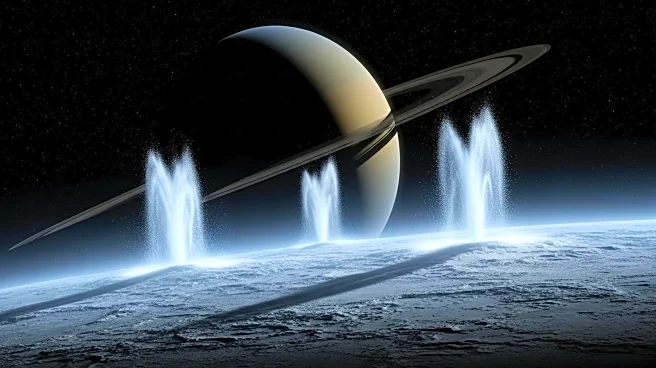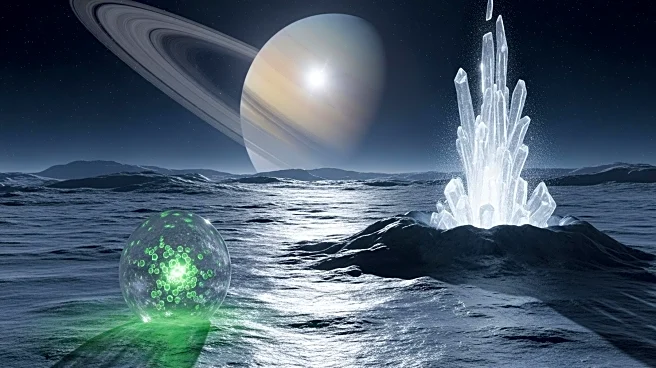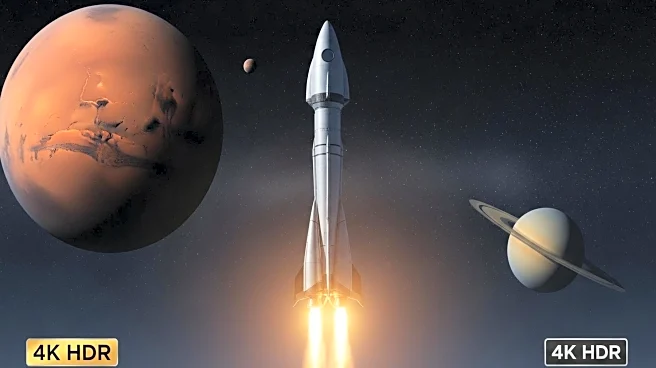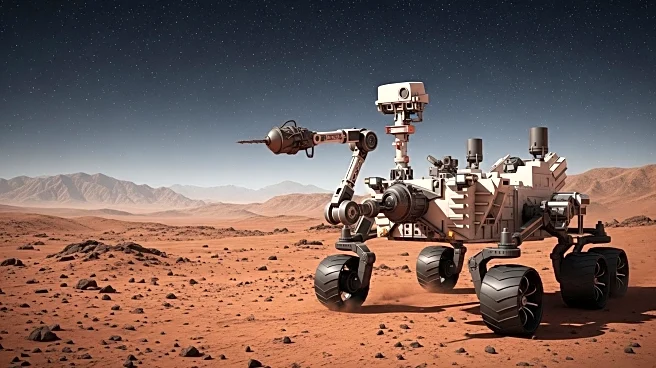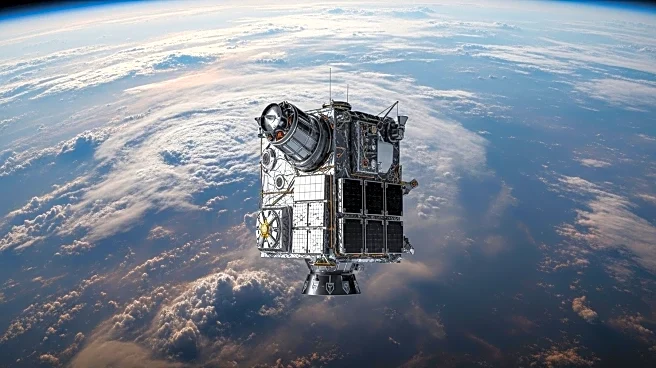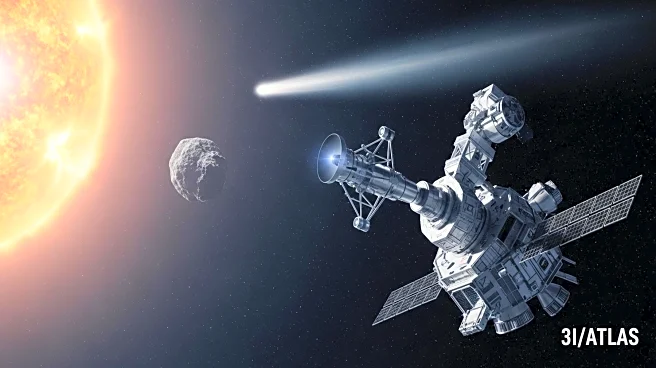What's Happening?
Recent research by the University of Bristol has revealed that Titan, Saturn's largest moon, has an atmosphere that behaves like a gyroscope, shifting its tilt with the seasons. This discovery was made using data from the Cassini-Huygens mission. Unlike other celestial bodies, Titan's atmosphere does not rotate in unison with its surface but instead oscillates, possibly due to a past event that knocked it off its spin axis. The study, led by Lucy Wright, found that the tilt of Titan's atmosphere changes with the seasons, adding complexity to its atmospheric dynamics. This finding is significant for NASA's upcoming Dragonfly mission, which will explore Titan in the 2030s. The mission will need to account for Titan's fast-moving winds, which are about 20 times faster than the moon's surface rotation, to ensure a successful landing.
Why It's Important?
The discovery of Titan's atmospheric wobble has significant implications for NASA's Dragonfly mission. Understanding the seasonal shifts in Titan's atmosphere is crucial for calculating the landing trajectory of Dragonfly, a drone-like rotorcraft. This knowledge will help engineers predict where Dragonfly will touch down, enhancing the mission's success. The research also contributes to the broader understanding of atmospheric physics, challenging existing models and encouraging further exploration of similar phenomena on other planets and moons. Titan's unique atmospheric behavior presents new questions for scientists and highlights the continued value of data from past missions like Cassini.
What's Next?
As NASA prepares for the Dragonfly mission, the insights gained from this study will be instrumental in planning the mission's trajectory and landing strategies. The mission is set to explore Titan in the 2030s, and the understanding of Titan's atmospheric dynamics will be crucial for its success. Scientists will continue to analyze data from the Cassini mission to uncover more about Titan's enigmatic nature. This research opens new avenues for exploration in planetary science and may influence future missions to other celestial bodies with similar atmospheric phenomena.
Beyond the Headlines
The peculiar behavior of Titan's atmosphere not only impacts space exploration but also contributes to the broader field of atmospheric science. The notion that Titan's atmosphere acts like a spinning top disconnected from its surface challenges existing models and encourages further research into atmospheric dynamics on other planets and moons, including Earth. Titan serves as a reminder of the complexities and mysteries of planetary atmospheres, offering new perspectives on climate systems beyond our planet.


